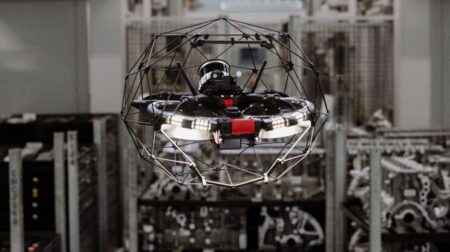Researchers from the University of Leeds have created a magnetic robot small enough to explore tubes within the lungs, which could assist in cancer therapy delivery or tissue sample collection.
The device, known as a magnetic tentacle robot, has been developed by a team of engineers, scientists and clinicians based at the Science and Technologies of Robotics in Medicine (STORM) Lab at Leeds. STORM aims to pioneer the use of robotic systems to assist in endoscopy and catheter procedures, where a fine tube is inserted into body.
Currently, doctors use an instrument called a bronchoscope to carry out an examination of the lungs and air passages. The procedure involves passing a flexible tube-like instrument, about 3.5 to 4mms in diameter, through the nose or mouth and into the bronchial passages.
Because of its size, the bronchoscope can only travel as far as the upper levels of the bronchial tree. To delve deeper into the lungs, a catheter or fine tube – measuring about 2mms in diameter – is passed through the bronchoscope and then on and into the smaller tubes of the lungs.
The study said doctors are limited in how they can move a bronchoscope, making it difficult to navigate the instrument and the catheter to where they are needed.
However, the magnetic tentacle robot has been developed to be much more manoeuvrable, it is able to shape shift and is small enough to avoid snagging on anatomical structures in the lungs. It uses a robotic guidance system that is personalised for each procedure.
Magnets mounted on robotic arms on the outside of the patient are used to guide the device through a route planned from pre-operative scans of a patient’s lungs and programmed into the robotic system.
Dr Cecilia Pompili, research fellow and thoracic surgeon at Leeds Teaching Hospitals NHS Trust and a member of the research team, said: “This new technology will allow to diagnose and treat lung cancer more reliably and safely, guiding the instruments at the periphery of the lungs without the use of additional X-rays.”
The proof of concept they have developed was based on laboratory tests involving a 3D replica of a bronchial tree modelled from anatomical data, with results published in journal Soft Robotics.
The next phase of the research will investigate the effectiveness of the device in navigating lungs taken from a cadaver.








